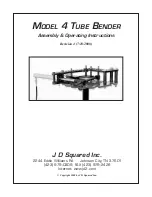
General Information
Page A-4
Operator’s Manual PiCCO
2
Version 3.1
If an alarm condition arises while the alarm is suppressed, only the optical warning will be given.
During the start up procedure an acoustic sound appears at the end of the activation time. If this sound
does not appear no acoustic alarm can take place.
External influences: carboxyhaemoglobin can result in incorrect high values for SpO
2
. The degree of
elevation is approximately equal to the amount of carboxyhaemoglobin present. Dye (e.g. Indocyanine
Green) or other substances which contain dyes which usually modify the light absorption capacities, can
lead to faulty measurement values of the oxygen saturation.
The measurement of SpO
2
is not recommended for patients weighing less than 20 kg (44lbs).
Do not use the device while a NMR scan is being carried out. An induced voltage can result in potential
burns.
Disposables:
When placing the arterial catheter into a large artery (e.g. femoral, brachial or axillary artery) do not
advance the tip of the catheter into the aorta.
An intracardiac blood pressure measurement is not allowed. This means that the measuring position
(i.e.catheter tip) must not be in the heart.
Further use of disposable items is not allowed. Re-sterilization of disposables may cause infections in the
patient.
Incorrect use of the ScvO
2
probe can lead to vessel perforation. Therefore check the correct position of the
probe as indicated in the probe´s instructions for use.
Electrical:
Do not use damaged probes or patient cables. Do not use any probes with exposed optical or electrical
components.
Do not reconnect the PiCCO
2
to electrical power if liquid has entered the device. A short circuit may
damage the device and cause hazardous conditions for patient and user.
Remove patient cables which are not needed. The used components are not galvanically isolated from
each other.
The PiCCO
2
always has to be connected with the protective earth conductor. Never use mains supply
cable or extension lines without protective earth conductor.
Connect the potential equalization at the back of the device with the potential equalization system of the
treatment room.













































